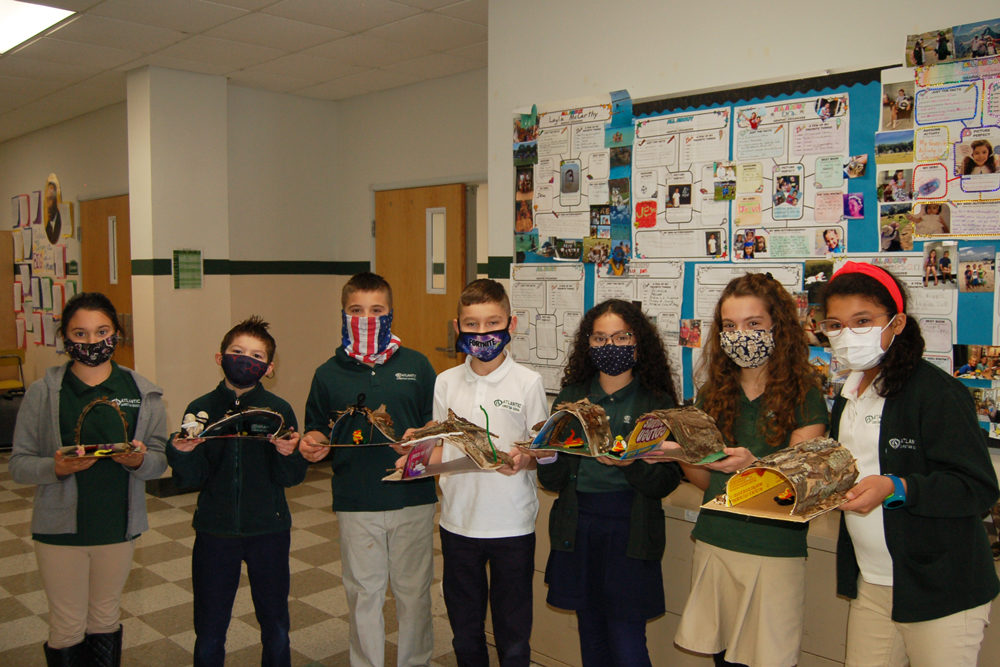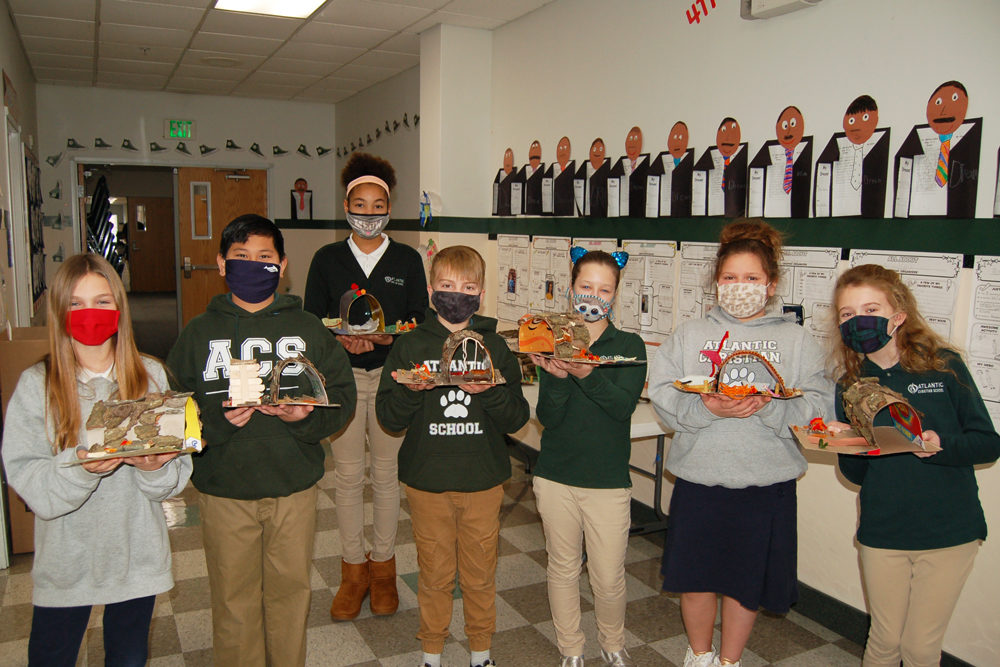 ACS 4th grade students have been learning about the history and culture of the Lenape Indian tribes, one of the early inhabitants of New Jersey, and recently created models of the longhouses where they lived. The longhouses are now on display in the hallway outside the 4th grade classrooms.
ACS 4th grade students have been learning about the history and culture of the Lenape Indian tribes, one of the early inhabitants of New Jersey, and recently created models of the longhouses where they lived. The longhouses are now on display in the hallway outside the 4th grade classrooms.
The students used tree bark and other materials to cover the longhouse roofs. Several models also incorporated fire pits. In addition to building the longhouse models, the students were required to write essays describing details about the longhouses.
 In her essay, 4th grader Mia Gaffney wrote that the longhouses were built by tying young trees to the frame, “trees young enough to bend and shape.” 4th grader Malani Christmon noted that 20 or more people could live in a longhouse and that “some longhouses had two stories used for sleeping and storage.” 4th grader Rafael Patiag wrote that a lot of fires were placed in the longhouse and were used for heating, cooking, and light. “There were holes at the top of the longhouse for the smoke to go out,” Patiag wrote. In his essay, 4th grader Ben Kelley wrote that one way to measure the length of a longhouse was by the number of fire pits. “A longhouse is about ten to twelve campfires long,” Kelley wrote.
In her essay, 4th grader Mia Gaffney wrote that the longhouses were built by tying young trees to the frame, “trees young enough to bend and shape.” 4th grader Malani Christmon noted that 20 or more people could live in a longhouse and that “some longhouses had two stories used for sleeping and storage.” 4th grader Rafael Patiag wrote that a lot of fires were placed in the longhouse and were used for heating, cooking, and light. “There were holes at the top of the longhouse for the smoke to go out,” Patiag wrote. In his essay, 4th grader Ben Kelley wrote that one way to measure the length of a longhouse was by the number of fire pits. “A longhouse is about ten to twelve campfires long,” Kelley wrote.
Faculty members Eric Tardif and Rebecca Jackson said the students did a great job compiling their facts about the Lenape longhouses and building their models. The unit was part of the 4th grade social studies curriculum, which includes studying about the history of the state of New Jersey.

